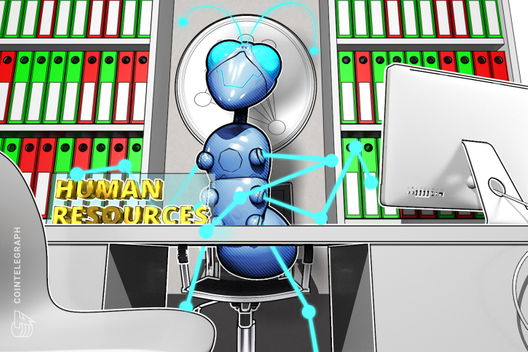Time For ETH to Rise and Shine as Futures Trading Now Available in US
Crypto exchange platform ErisX is bringing Ether (ETH) futures trading to the United States, becoming the second cryptocurrency derivatives product on offer in the country. The announcement came only a few days after the Chicago-based, TD Ameritrade-backed ErisX obtained a digital currency license from financial regulators in New York.
Bitcoin (BTC) futures trading debuted back in 2017 with both the Chicago Mercantile Exchange and the Chicago Board Options Exchange launching cash-settled BTC futures trading. CBOE has since shuttered its Bitcoin futures contracts trading service.
The news comes after a year of speculation about a possible debut of ETH futures in the U.S. market with some of the arguments surrounding the possible launch hinged on the regulatory classification of Ethereum — whether Ether tokens should be deemed a commodity or a security.
A high-ranking official from the Securities and Exchange Commission has in the past characterized Ether as not a security. Indeed, Commodity Futures Trading Commission chairman Heath Tarbert predicted that ETH futures could hit the U.S. market by 2020 — a prediction that became true with the ErisX announcement.
Details of the offering
The ErisX Ether futures contract is a physically delivered futures contract product based on the ETH/USD trading pair. According to a company blog post announcing the launch, the expiration schedule for the ETH futures trading is both monthly and quarterly.
Being physically-settled, the ErisX ETH futures trading will see an actual exchange of the underlying Ether tokens at the expiration of the contracts. The newly introduced Ether futures will also run alongside the platform’s ETH spot trading market, potentially ensuring transparency in price discovery, as well as efficient collateralization of trades. In an email to Cointelegraph, Thomas Chippas, the CEO of ErisX, explained the reason for opting for physical delivery as against cash-settled futures, stating:
“A physically-settled contract plays a unique role in the market. First, a physically-settled contract reduces basis risk — the buyer of the future receives the actual asset underlying the derivative contract, not an approximated, index-derived cash amount, which does not perfectly track the price of the underlying asset.”
For Chippas, the need for robust price discovery played a major role in the exchange’s decision to settle for physically-settled and not a cash-settled ETH futures contract despite the added delivery costs and brokerage fees. Explaining further, he added:
“With our ETH contract, holders of ETH can use that ETH for collateral by depositing it into the clearinghouse and commencing trading — with cash-settled products, holders of ETH must first convert the ETH to cash somewhere else, incurring the market risk and expense of doing so, or they need to post cash to trade the cash-settled contract while still holding the ETH, bearing the cost and overhead of that inefficiency.”
According to ErisX, the newly launched ETH futures contracts will utilize the platform’s central limit order book (CLOB) system. For ErisX, the CLOB matching engine seeks to democratize the market, enabling equal access for all participants. An excerpt from the company’s blog explaining the benefits of its CLOB engine reads:
“CLOBs enable all participants to trade with each other without requiring new and exclusive agreements with each counterparty, and our surveillance program works to prevent malicious activity. CLOBs are used in traditional commodity markets by leveraging a matching engine that employs a price/time matching algorithm.”
Chippas, however, didn’t rule out the possibility of creating a cash-settled ETH futures contract product in the future, adding: “We think there is a role to place for cash-settled products, too. In addition to potential ETH products, we have unique ideas that we are working on and expect to launch, subject to regulatory approval, later this year.”
What happens to ETH spot price?
When talk of a possible ETH futures contract by the CBOE emerged in late 2018, some crypto commentators argued that such a development could significantly impact the spot price of Ether, as the introduction of derivatives enables traders to place long or short bets on the future price trajectory of an asset. The crypto space has changed somewhat since late 2018, but the same questions over the potential implications of Ether futures trading on the spot price of the asset still exist.
For David Grider, a senior research analyst at market research firm Fundstrat Global Advisors, the ErisX ETH futures offering represents a nonevent for the underlying Ether spot price. According to Grider, ErisX does not command sufficient liquidity for its futures contracts to significantly affect ETH prices, telling Cointelegraph:
“Over the long term, you could say futures negatively impact the price since bullish investors no longer need to actually buy the underlying. You could also say it gives bears a new means to short the price — we saw this with Bitcoin in Dec. 17, but let’s not forget we were at the top of a major bubble then. That’s not the view I take. My view is that futures add greater liquidity to the market, which de-risks the asset, and has a positive impact on valuations. Overall, it’s good that Ethereum has opened up to the U.S., and I suspect demand for ETH trading will grow slowly over time as it did for BTC.”
Apart from futures trading offering investors the ability to enter into short positions — which as crypto market analyst Mati Greenspan said in 2018 is a “critical component of price discovery” — ErisX ETH futures also serve to expand the visibility of Ether to a broader pool of investors. Intending market participants not keen on holding the actual asset can gain exposure to the Ether market by either going long or short on the future price of Ether.
If the trend observed on other derivatives platforms like Bitfinex is anything to go by, then ErisX might see an overwhelming majority of long bets. As previously reported by Cointelegraph, ETH longs on Bitfinex have gone parabolic, having steadily increased in volume since the start of the year.
Is Ether mature enough?
Given the volume of crypto market capitalization tied to Ether, any significant change in ETH’s valuation over a short time usually reverberates across several cryptocurrency projects. The bear market of 2018 effectively led to the death of the initial coin offering fundraising model, negatively impacting the valuation of several cryptocurrency startups.
Recently, the events of Black Thursday — when ETH’s price fell by about 50% — led to opportunistic profiteering on MakerDAO. Amid a tide of liquidations, the project would end up declaring losses of about $6.65 million in Dai stablecoins.
Related: MakerDAO Takes New Measures to Prevent Another ‘Black Swan’ Collapse
Apart from possible price implications, the question of Ether’s maturity as an asset also comes to the fore. Bitcoin’s market capitalization was over $300 billion back when BTC futures debuted in the U.S. in December 2017. Admittedly, the largest crypto, like others in the market, has shed a significant portion of its late 2017 valuation and is now around $174 billion as Ether’s market cap is only one-eighth of Bitcoin’s, at $22 billion. Commenting on Ether’s maturity as a commodity for futures trading in the U.S., Chippas remarked:
“Ethereum has real functionality and use cases, with real people, firms and governments beginning to use the network. The structure of the Ether market has many similarities with existing commodity markets and we believe the precedents and standards already in existence for those markets can be applied to Ether.”
According to Chippas, the roll-out of ETH futures trading on ErisX will further serve to improve the visibility of Ether to investors, adding: “We believe that Ether futures will bring broader market participation, a diversity of trading objectives and time horizons, more robust and resilient markets, as well as improved risk management tools, among other things.”
While ETH futures trading in the U.S. is now a reality, derivatives products for other altcoins might still be a long time coming. When asked about the possibility of major top 10 altcoins being approved for futures trading by the CFTC, Grider opined:
“Regulators will not allow altcoins, or any asset for that matter, that they feel is highly susceptible to market manipulation to trade in the U.S. The real answer depends on market size, liquidity and concentration of the float. Bitcoin and Ethereum are the two largest crypto assets.”
Related: Ethereum Developers Roll up Their Sleeves in Hunt for Scalability Cure









